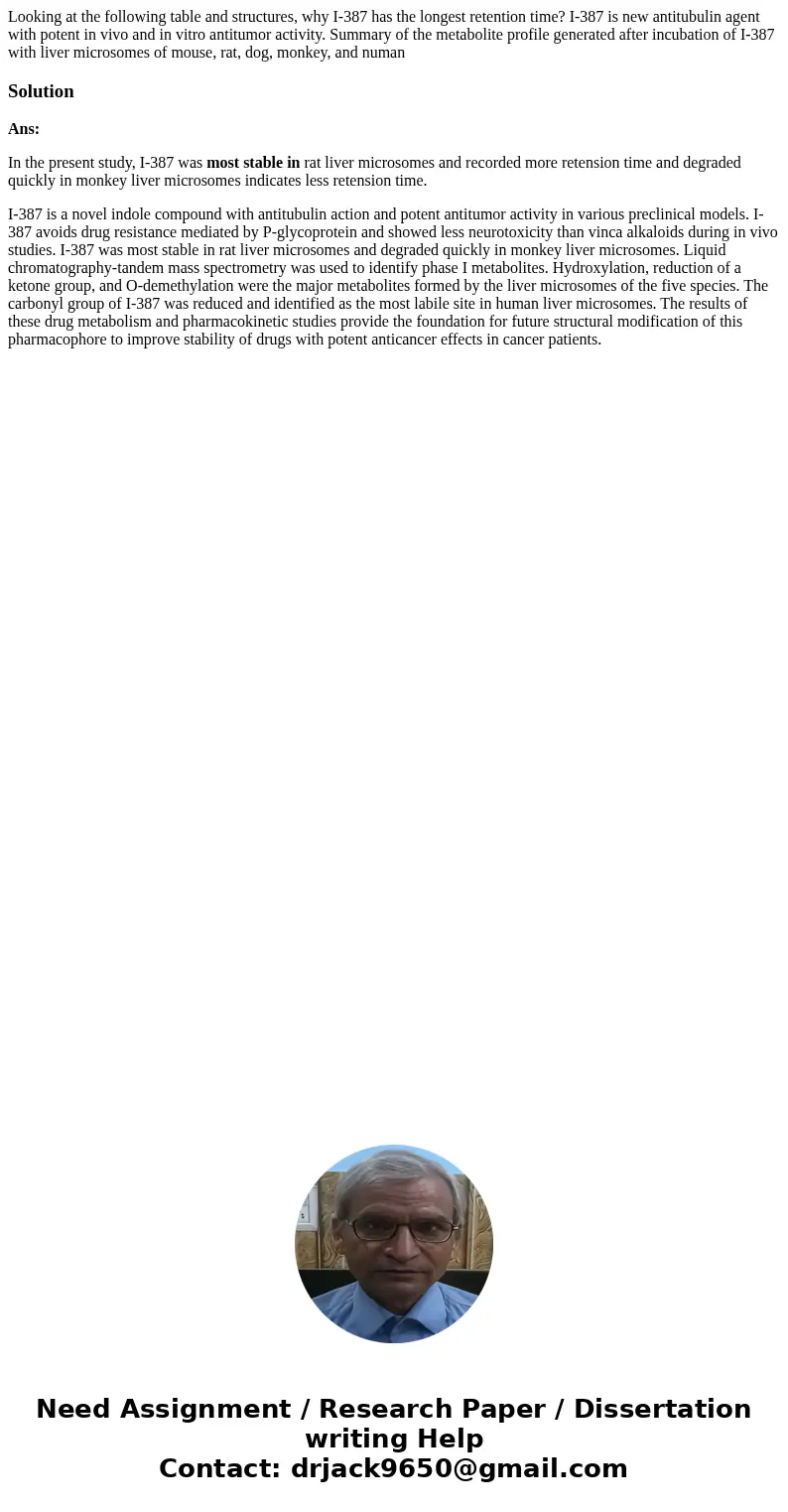Looking at the following table and structures why I387 has t
Solution
Ans:
In the present study, I-387 was most stable in rat liver microsomes and recorded more retension time and degraded quickly in monkey liver microsomes indicates less retension time.
I-387 is a novel indole compound with antitubulin action and potent antitumor activity in various preclinical models. I-387 avoids drug resistance mediated by P-glycoprotein and showed less neurotoxicity than vinca alkaloids during in vivo studies. I-387 was most stable in rat liver microsomes and degraded quickly in monkey liver microsomes. Liquid chromatography-tandem mass spectrometry was used to identify phase I metabolites. Hydroxylation, reduction of a ketone group, and O-demethylation were the major metabolites formed by the liver microsomes of the five species. The carbonyl group of I-387 was reduced and identified as the most labile site in human liver microsomes. The results of these drug metabolism and pharmacokinetic studies provide the foundation for future structural modification of this pharmacophore to improve stability of drugs with potent anticancer effects in cancer patients.

 Homework Sourse
Homework Sourse